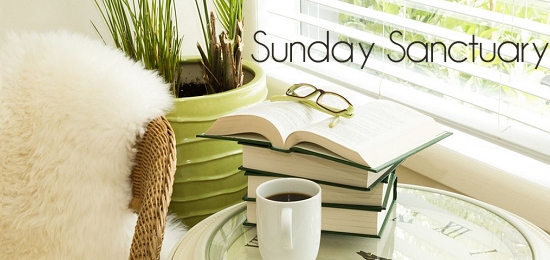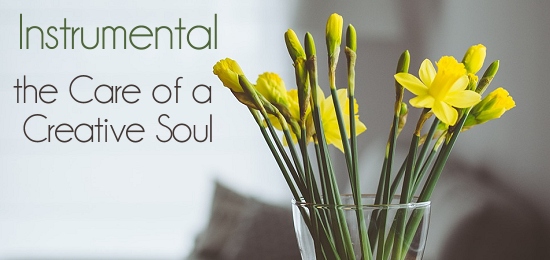
Daisy Morris ran a tired hand through her long red hair, grimacing when the ring on her left hand caught in her braid. The day before Mother’s Day was always crazy-busy, and her flower kiosk had been the epicenter of a steady buzz of traffic. She lowered her hand to glance at her wristwatch. It was four-thirty and the kiosk didn’t close until seven.
Taking advantage of the brief lull, she walked through the seasonal fruit and pastry display to the espresso bar in the grocery store lobby. “Our Daisy isn’t looking to fresh,” quipped Jolene, the wrinkled, gray-haired woman who claimed she could ‘still sling espresso shots with the best of them.’
“Not feeling so fresh, either,” the younger woman admitted. “Every year it’s the same thing… all these men and boys coming to buy cards and flowers as if Mother’s Day is some kind of surprise. Makes you wonder how they cope with the rest of their lives. Can I get a – ”
“Grande soy no-water chai,” Jolene finished with her. “Sure thing, honey. As to Mother’s Day… at least they’re getting something. My husband was a soldier… so many years holidays went by without any kind of acknowledgement because he was deployed. These days, these youngsters in the service have email and facetime and skype and sat-phones but in my day… ”
Daisy grinned, listening to Jolene’s mini-monologue as she watched the older woman expertly crafting her drink. “Oh, come on, Jo – you are not that old.”
“I’m older than you think,” she replied, handing over a cardboard-wrapped paper cup. “And this one’s on me. You have a customer waiting, and I think you’re going to need the fortification.”
Following the barista’s gaze, Daisy turned to her flower stand, and saw a boy who looked like he was about ten hovering around the carnations and daffodils. “I’ll be right there,” she called to him. “Thanks, Jo. Really.”
“Aw, it’s nothin’ but a thing,” Jolene said. “Now, scoot!”
Laughing around the rim of her cup, Daisy took a swig of her drink, savoring the spiciness of the chai and the comforting warmth of the steamed soymilk. It had been a wet spring, and a chilly one, at that, and she was constantly in and out of the refrigerators where the more delicate flowers shared space with prepared arrangements.
The boy was still hovering as she returned to her station. She tucked her cup behind a roll of ribbon on the work-desk below counter-height and smoothed her apron. Then she went to check on the kid. “Hi,” she said gently. “I’m Daisy. Are you looking for something special?”
They boy’s gray eyes betrayed the kind of hurt that was usually only evident in older faces, but he managed a faint smile. “I’m Jack,” he said. “I need to get flowers for my mom,” he said, with a hint of a quiver in his voice. “But I only have eight dollars.”
Daisy did some quick accounting. For that money, the boy could get a bunch of mini-carnations, or five irises or… “I think we can work with that. Do you know your mom’s favorite flowers?”
“Dad used to get her roses, when I was little.”
She swallowed her grin. She’d initially thought the boy was ten, but now, noticing the softness of his sandy-brown hair and the sprinkling of freckles across his cheeks, she thought he might be eight or nine. Definitely an age that still qualified as ‘little’ in her estimation. “Is your mom with you in the store?”
“She’s paying for groceries. I said I’d meet her at the door.”
“Okay,” Daisy said. “Well, for eight dollars we could do three roses and some baby’s breath and greens…” She could see the boy deflating in front of her. “You don’t want to do roses?”
“Sometimes when Mom sees roses, she gets sad,” the boy said.
Daisy couldn’t help it; she started inventing scenarios in her head. Maybe this boy’s father had been a soldier, like Jolene’s husband, and had died serving his country. Or maybe it was something much more prosaic: a separation or divorce. She shook her head, realizing that the kid was still talking.
“… and it’s been a year since he moved out, and I just want her to smile.”
Her smile was soft and wistful. “That’s very sweet. Well, okay, no roses. Do you know her favorite color?”
“Yellow.”
“Yellow,” she repeated thoughtfully. “Hmm. Yellow. Okay, Jack, how about we do a bunch of these…” She led him around the stand of fresh flowers to the bucket of daffodils. They were on special – only a dollar. “Or maybe two bunches. And then add an iris or two for a little punch of color.” She went to the fridge and drew out two of the long-stemmed purple flowers, glanced at the boy, and then added a third. “Three would look better,” she explained. “Does your mom have a vase at home?”
He nodded. “She has lots of vases.”
“Good. Let’s wrap these in tissue then.” Daisy paused a moment. “Do you want a card to go with these?” Before the boy could answer, she tacked on. “The floral cards aren’t very big, but they’re free.”
The boy nodded, grinning. “Yes, please.”
Daisy took the flowers to her work-desk behind the counter, pausing to sip from her all-but-forgotten chai. Still warm, she thought. Good. Selecting a handful of small cards, she handed them to the boy.
He handed most of them back. “This one,” he said, holding up a card that had yellow tulips and the words Happy Mother’s Day printed on the front.
“Do you need a pen?”
“Yes, please.”
Jack was too small to reach the service counter. “Come around here to the opening and you can lean on the end of my workbench to write, okay?”
“Thanks.”
Daisy grinned, and resisted the urge to reach out and ruffle the boy’s hair. Softly, she said, “Jack, do you mind me asking… you said your dad used to bring roses to your mom?”
“They got divorced last August,” he said. “He has another family now.”
Oh, poor kid.
“I’m sure he still loves you,” she assured the boy.
The boy shrugged, the way young people sometimes do when a concept is just too big for them to truly understand. “I guess.” He put down the pen. “I’m done.”
Daisy took the card with its topsy-turvy lettering, and slotted it into a plastic card-holder which she tucked into the tissue wrapped flowers. She cut two lengths of ribbon – yellow and purple – and tied the bundle together.
“Alright, Jack, let’s ring you up.” Daisy punched buttons on the register, then looked up to see Jack’s stricken expression. The total had come to $8.64.
“Can we put one of the bunches of daffodils back?” he asked quietly.
Daisy hesitated. “We could, or… hey, Jack… do you think you could lift that empty bucket… the one near the sign that says, ‘Mother’s Day Bouquets?’ Because if you could bring it to me, you’d be helping out, and I could give you my employee discount.” In a conspiratorial tone, she added, “It would bring the total down to just under seven dollars.”
The boy didn’t answer. He just ran to get the bucket, and bring it back to the counter. “Here.”
“Well, thank you, Jack.” She punched another button on her register. “Six dollars and ninety-two cents, please,” she said.
Jack counted out seven wrinkled dollar bills. “I’ve been saving my allowance,” he said.
Daisy grinned. “I wasn’t very good about doing that, when I was your age. It’s nice that you’re getting flowers for your mom.” She handed him the nickel and three pennies that were his change, and then came around the counter to present him with the wrapped flowers.
“Tell your mother, she’s lucky to have you,” she told the boy.
Jack grinned. “Oh. She knows.”
She watched him turn and catch the eye of a woman standing near the door with a cart of bagged groceries, saw him place his tissue-wrapped bundle in the child-seat part of the cart, and smiled broadly when his mother, tired face suddenly suffused with delight, pulled her son into a rough embrace right there in the grocery story lobby.
Yeah, the day before Mother’s Day was always crazy-busy, and she was pretty sure there was going to be another rush between five-thirty and seven, but sometimes… sometimes she got to see love in action, and that made everything worth it.
About the author: Melissa A. Bartell
 Melissa is a writer, voice actor, podcaster, itinerant musician, voracious reader, and collector of hats and rescue dogs. She is the author of The Bathtub Mermaid: Tales from the Holiday Tub. You can learn more about her on her blog, or connect with her on on Facebook, Instagram, or Twitter.
Melissa is a writer, voice actor, podcaster, itinerant musician, voracious reader, and collector of hats and rescue dogs. She is the author of The Bathtub Mermaid: Tales from the Holiday Tub. You can learn more about her on her blog, or connect with her on on Facebook, Instagram, or Twitter.

 Patricia Wellingham-Jones is a widely published former psychology researcher and writer/editor. She has a special interest in healing writing, with poems recently in The Widow’s Handbook (Kent State University Press). Chapbooks include Don’t Turn Away: poems about breast cancer, End-Cycle: poems about caregiving, Apple Blossoms at Eye Level, Voices on the Land and Hormone Stew.
Patricia Wellingham-Jones is a widely published former psychology researcher and writer/editor. She has a special interest in healing writing, with poems recently in The Widow’s Handbook (Kent State University Press). Chapbooks include Don’t Turn Away: poems about breast cancer, End-Cycle: poems about caregiving, Apple Blossoms at Eye Level, Voices on the Land and Hormone Stew.







 ckhand 35ft away never heard me but the mate did, and he was 400ft away. As he ran past the the deckhand he said “Dave fell in, grab a line now,” but what the deckhand heard was “take a break.”
ckhand 35ft away never heard me but the mate did, and he was 400ft away. As he ran past the the deckhand he said “Dave fell in, grab a line now,” but what the deckhand heard was “take a break.” 








 Christine Mason Miller is an author and artist who has been inspiring others to create a meaningful life since 1995. Signed copies of her memoir, Moving Water, are now available at
Christine Mason Miller is an author and artist who has been inspiring others to create a meaningful life since 1995. Signed copies of her memoir, Moving Water, are now available at 



 Melissa is a writer, voice actor, podcaster, itinerant musician, voracious reader, and collector of hats and rescue dogs. She is the author of
Melissa is a writer, voice actor, podcaster, itinerant musician, voracious reader, and collector of hats and rescue dogs. She is the author of 








 Bella Cirovic is a photographer and writer who lives with her husband and daughter in the suburbs outside of NYC. She writes on the subjects of self care, body love and nourishment, crystals, essential oils, and family life. Catch up with Bella at her blog:
Bella Cirovic is a photographer and writer who lives with her husband and daughter in the suburbs outside of NYC. She writes on the subjects of self care, body love and nourishment, crystals, essential oils, and family life. Catch up with Bella at her blog: